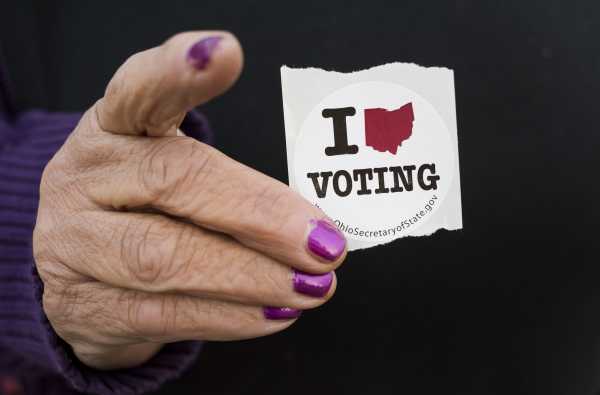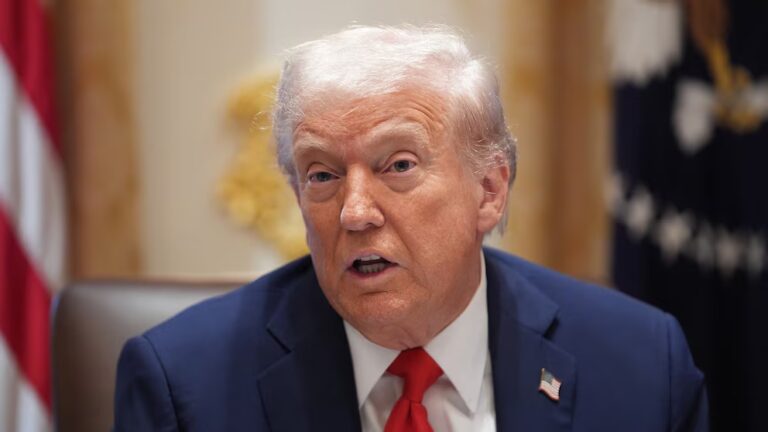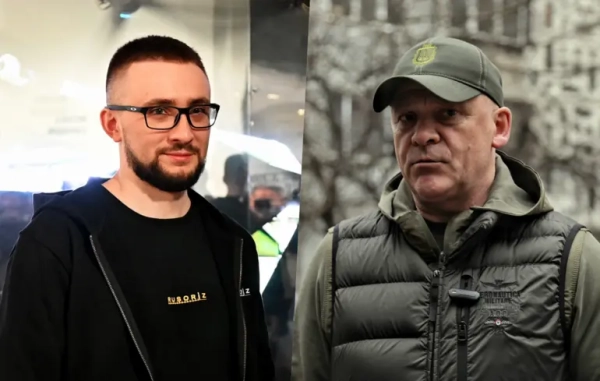
This November, Ohio voters will have an opportunity to deal a blow to the war on drugs and mass incarceration.
Ohio Issue 1, a ballot initiative, would reduce drug possession offenses to misdemeanors, so they’re no longer classified as felonies with harsher penalties. It would then use the money saved (because the state wouldn’t lock up as many people) on addiction treatment and crime victim funds. It would also allow inmates, with exceptions for those convicted of murder, rape, or child molestation, to reduce their prison sentences by participating in prison rehabilitation programs.
The measure is, to say the least, controversial. Former Ohio Attorney General Mike DeWine, the Republican running for governor, said it would be “devastating,” arguing that it would attract more drug dealers to the state. (There’s no evidence for this claim.) Richard Cordray, the Democratic candidate for governor, has argued that the measure would “set the way toward a policy of being smart on crime in the future, smart on how we use taxpayers’ dollars, smart on how we build people’s potential to be productive citizens in our society.”
The policy change that Ohio voters will consider, however, isn’t new. The defelonization of drug possession offenses is something that five other states have adopted — to promising results.
As America confronts its status as the world’s leader in incarceration, and governments are faced with the high costs of putting so many people in prison, some states are considering reforms that will help them reduce their prison populations — with a focus on drug policy in particular.
Ohio Issue 1 is the latest example of that. But it also shows some of the limits of the current criminal justice reform movement.
What Ohio Issue 1 would do
Ohio Issue 1 is a constitutional amendment, so it would take precedent over standard legislation. Here are some of the major changes it would make, based on the text of the initiative:
- Prevents classifying offenses for using, possessing, or obtaining illicit drugs, such as heroin, fentanyl, cocaine, or meth, as felonies, instead requiring they be treated as misdemeanors.
- Prohibits jail or prison time for such offenses, unless it’s an individual’s third offense, or more, within two years.
- Allows individuals who were previously convicted of such offenses to ask a court to reduce their conviction to a misdemeanor.
- Aims to reduce the use of prison time for non-criminal probation violations.
- Applies financial savings to addiction treatment programs and crime victim funds.
- Allows people in prison, except those incarcerated for murder, rape, or child molestation, to seek sentence reductions up to 25 percent if they participate in rehabilitative programs, up from 8 percent under current rules.
The proposal was put forward by the Ohio Safe and Healthy Communities Campaign, also known as Yes on 1. Financially, it’s received a lot of outside support — including from the Chan Zuckerberg Initiative (which is in part owned by Facebook founder Mark Zuckerberg), the Open Society Policy Center (founded by liberal billionaire George Soros), and the Open Philanthropy Project.
Notably, the initiative still allows state law to classify drug offenses for distribution and sales as felonies. So those offenses can remain on the books, and drug dealers and traffickers can still be punished as felons.
Public polling on the measure is limited. A survey released in October by Baldwin Wallace University found that almost 48 percent of likely voters back Issue 1, while nearly 31 percent oppose it and more than 21 percent are undecided.
Five other states have defelonized drug offenses
What happens if Issue 1 passes? This actually isn’t new territory — because five states have enacted drug defelonization laws in recent years. It started with California in 2014, when its voters approved Proposition 47. Since then, Connecticut, Utah, Alaska, and Oklahoma have enacted similar measures, according to a report on the laws by the Urban Institute’s Justice Policy Center.
Urban researchers Brian Elderbroom and Julia Durnan wrote that the measures cut prison populations and saved money, letting resources go to areas besides prisons. In California, for example, state officials estimated that “Proposition 47 reduced prison spending by $68 million in the first year alone, and California awarded more than $100 million in grants to local governments for mental health treatment, victims’ services, and crime prevention programs.”
California’s measure also didn’t lead to more crime, Elderbroom and Durnan noted: “Crime analyses conducted in 2018 found that while rates of certain property crimes in California have increased slightly over the past several years, there is no causal relationship between passage of Proposition 47 and crime.”
The Urban researchers concluded: “Reclassifying drug possession from a felony to a misdemeanor can reduce the negative impacts imposed on people and communities by felony convictions, reduce imprisonment of people convicted of drug possession, and redirect limited resources to treatment and prevention without negatively impacting public safety.”
To some degree, this should be expected. Research has long indicated that the severity of punishment has very little effect on someone’s willingness to commit a crime or use drugs. For example, a 2014 study from Peter Reuter at the University of Maryland and Harold Pollack at the University of Chicago found there’s no good evidence that tougher punishments or harsher supply elimination efforts do a better job of driving down access to drugs and substance misuse than lighter penalties.
So it doesn’t matter so much if people are punished harshly (through, say, a felony) than whether they’re punished more leniently (through, say, a misdemeanor).
In Ohio, critics of Issue 1 have pointed to another concern: that reducing drug offenses from felonies to misdemeanors will make it harder to get people into addiction treatment. As it stands, drug courts use the threat of criminal punishment — and prison in particular — to get drug offenders to agree to addiction treatment. If that threat is removed, then judges will be less able to push people into treatment. Critics point to California’s example, where drug court participation in some areas has dropped in the aftermath of Proposition 47.
But supporters of Issue 1 argue that the savings produced by the initiative — which will be largely put into addiction treatment — will actually lead to more access to treatment, not less.
There are also broader philosophical questions here: Should drug addiction be left to the criminal justice system to deal with, or the health care system? Should both play a role? What’s the right balance to strike here?
How the addiction treatment aspect of the issue will play out remains to be seen. But this is a particularly pertinent issue in Ohio, because it’s one of the states hit hardest by the opioid epidemic.
In the international arena, there’s a good basis for what Issue 1 supporters are arguing here: Portugal. In 2001, Portugal decriminalized all drugs and dramatically ramped up treatment with, among other interventions, special commissions that direct problem drug users to treatment. In the ensuing years, Portugal saw drops in drug-related deaths and reported past-year and past-month drug use, although some increases in lifetime prevalence of drug use and an uptick in reported drug use among teens after 2007, according to a 2014 report from the Transform Drug Policy Foundation.
Ohio is not going as far as Portugal. It’s not fully decriminalizing drugs, since drug possession offenses will remain misdemeanors. And it’s not dedicating anywhere as many resources to addiction treatment as Portugal did. But Issue 1 is in some ways a downscaled version of the Portuguese approach, so some lessons can be drawn — and they suggest that the critics of Issue 1 are buying into hyperbole.
As Jessie Balmert put it for the Cincinnati Enquirer, “Some say [Issue 1] will destroy the state. Others claim it will cure Ohio’s drug problem. Neither is true.”
Drug defelonization is a start. But to fully address mass incarceration, states will have to go further.
What about mass incarceration? Proposition 47, Issue 1, and other proposals like them have been pitched in recent years to help reduce America’s staggering prison population.
According to the World Prison Brief, the US incarceration rate is 655 per 100,000 people. That’s higher than any other country in the world, including authoritarian nations like Russia (402) and China (118). It’s higher than comparable developed nations like Canada (114), Germany (75), and Japan (41), which have similar levels of crime — or lower, particularly when it comes to murder and gun violence — compared to America.
Sending fewer people to prison for drugs, as Proposition 47 and Issue 1 aim to do, will help get the US to more reasonable levels of incarceration.
But these measures alone won’t be enough.
Over the past few years, there has been a powerful narrative told about mass incarceration, through books like Michelle Alexander’s The New Jim Crow, suggesting that America’s war on drugs has been the primary driver of mass incarceration.
This isn’t right. The latest data from the US Bureau of Justice Statistics shows that in state prisons, where about 87 percent of US inmates are held, nearly 55 percent are in for violent offenses (such as murder, manslaughter, robbery, assault, and rape), while only a little more than 15 percent are in for drug offenses.
These figures are at best a minimum for the number of violent offenders in prison. It’s not rare for violent offenders to plea down their charges to nonviolent crimes; this lets offenders get a lower sentence, and it lets prosecutors and judges skip a costly trial. So at least some of the supposedly nonviolent offenders have likely committed violent crimes.
So if the US is to significantly reduce prison populations, it’s going to have to address non-drug crimes. For example, the criminal justice advocacy group #cut50 aims to reduce the prison population by 50 percent. This is going to be simply impossible if the focus is only on drug crimes, given that only around 15 percent of people in state prisons are in for drug offenses.
And even if the US reduced its prison population by 50 percent, its resulting incarceration rate of around 300 per 100,000 people would still dwarf countries like Canada, Germany, and Japan, none of which have incarceration rates above 120.
Ohio Issue 1 makes some progress in non-drug areas by allowing sentencing reductions up to 25 percent for other offenses. But this also comes with the caveat that it totally excludes people incarcerated for murder, rape, or child molestation — showing that there are some crimes that even reformers consider out of bounds for change, which may make it harder to cut prison populations further down the line.
Measures like Issue 1, then, chip away at the global incarceration disparity between the US and other countries. But if the US wants to get closer to other developed nations’ levels, it will eventually need to go much further — and that will require reform beyond the war on drugs.
Sourse: vox.com






